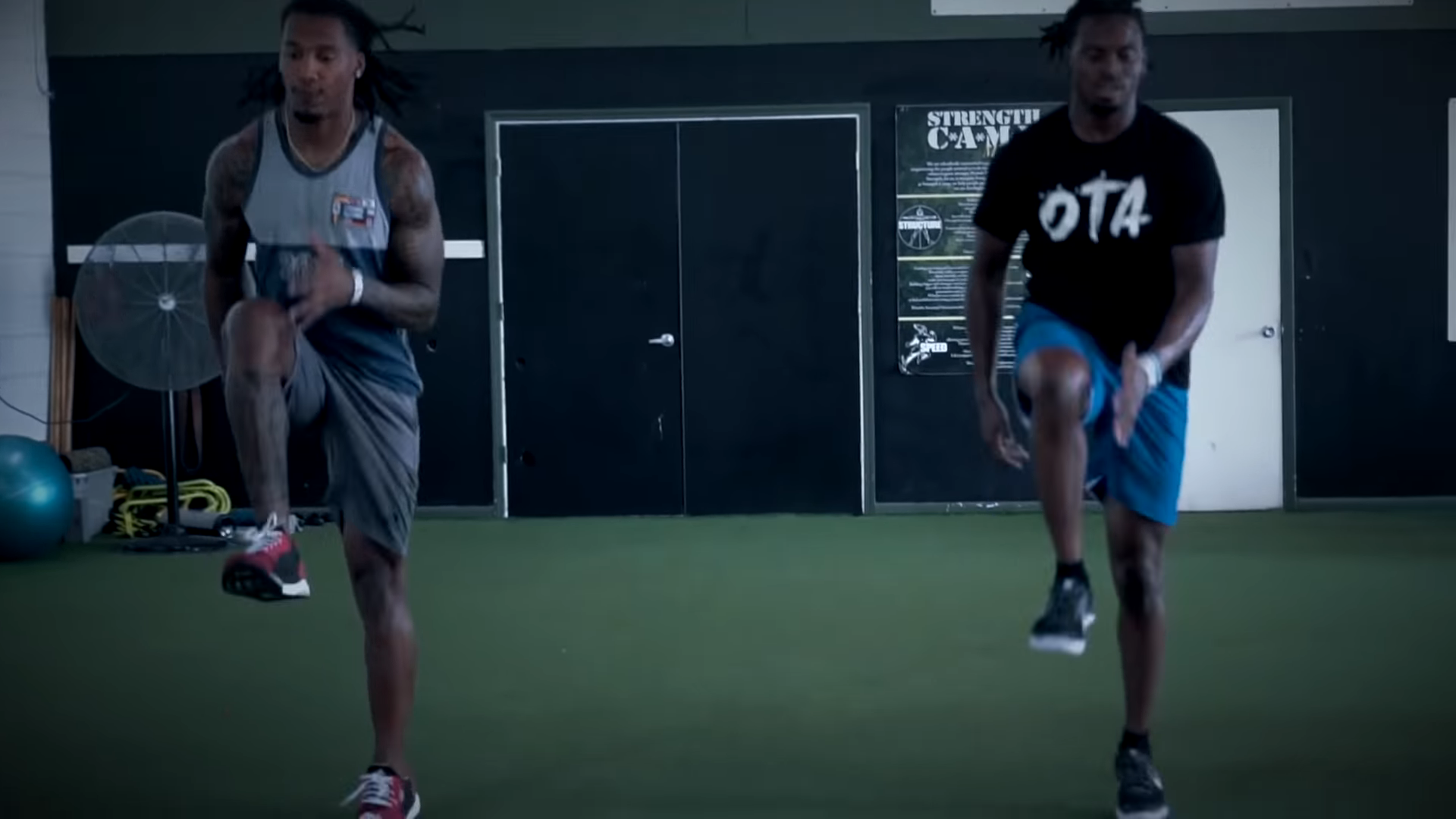One of the worst parts of an athlete’s career is battling injury. This is commonly sustained as you push yourself while running or jumping.
That’s why today I want to talk about how to stay injury free while sprinting.

As you train hard and prepare for intense competition, one of the most common injuries an athlete will face is a hamstring tear.
We usually see this happen when an athlete is fighting for a pass, or racing to the finish line, or pushing themselves harder than normal
The biggest issue with an injury, is the time you have to take off from training.
When you’re a competitive athlete, each training session you skip is a missed opportunity to grow strong and improve your game.
That’s why the best thing you can do is take all the steps necessary to stay injury free during sprint training.
I’m going to break down the most likely causes of sprinting injuries and most importantly, how you can prevent them from happening in the first place.
Whether you suffer from chronic injuries or sustain just one issue during the season, read through this quick guide to optimize your season and keep you off the sidelines.
Lets go.
THE CAUSE OF INJURIES
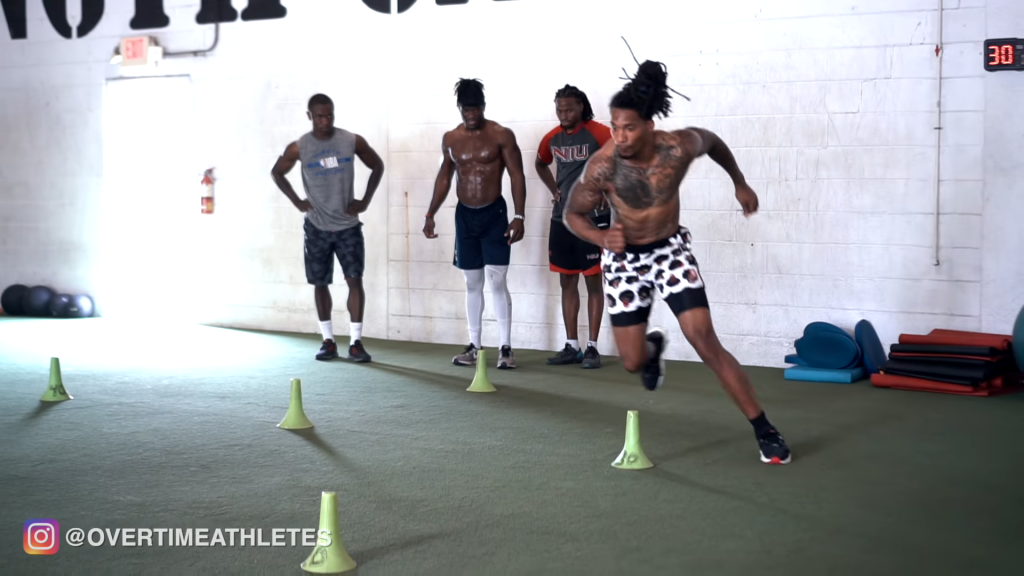
While every athlete has a different body, ability to recover, and work threshold – there’s one issue they usually have in common that makes them susceptible to injury.
With guys that come into my gym, most problems occur when their sprinting mechanics are off…
What happens while you’re sprinting and going through your cycling, the hips are flexed and the hamstring is contracting.
Then as you extend for the next step, the problem occurs as the hamstring remains contracted.
Think of this as like a head-on collision in a car accident. The momentum of the car’s force carries your body forward even though you’re stepping on the brakes.
The force you create while sprinting pulls you forward, but your hamstring’s contraction acts as a brake.
Imagine that you’re asking a muscle to perform two different movements at once. The muscle continues to contract when it’s not supposed to and this can cause a tear.
Now how can we combat this? By learning how to properly cycle.
Keep reading to stay injury free while sprinting.
THE REMEDY
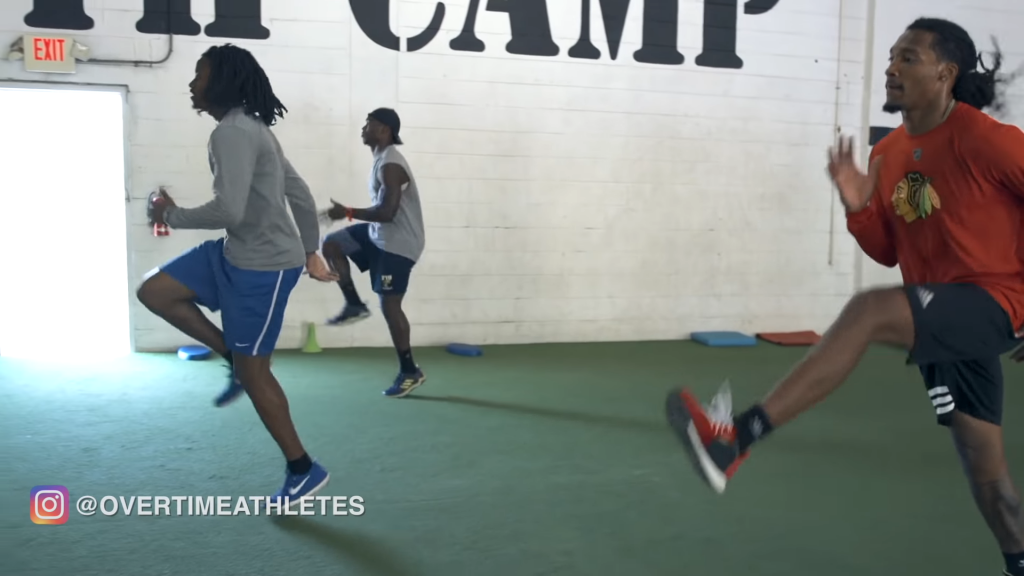
Cycling is the term I like to use to describe the point at which an athlete hits top speed during their sprint.
It’s impossible to run at your absolute fastest pace right off the get-go. That’s why you begin with an acceleration phase and and gradually transition into your top speed or “cycling.”
To train this phase even more check out the 11 Best Acceleration Drills for Athletes.
For right now, I’m going to share the #1 drill to perfect your cycling and reduce your chances of hamstring tear to stay injury free while sprinting.
The B-Skip
B-Skips are a staple for me when I’m training my athletes.
If you’re already familiar with A-Skips, this is simply a progression where we’re teaching the body proper mechanics to release the hamstring.
The B-Skip is a dynamic drill where you bring your knee up to hip height. The heel stays tucked and close to the glute, keeping the hamstring contracted.
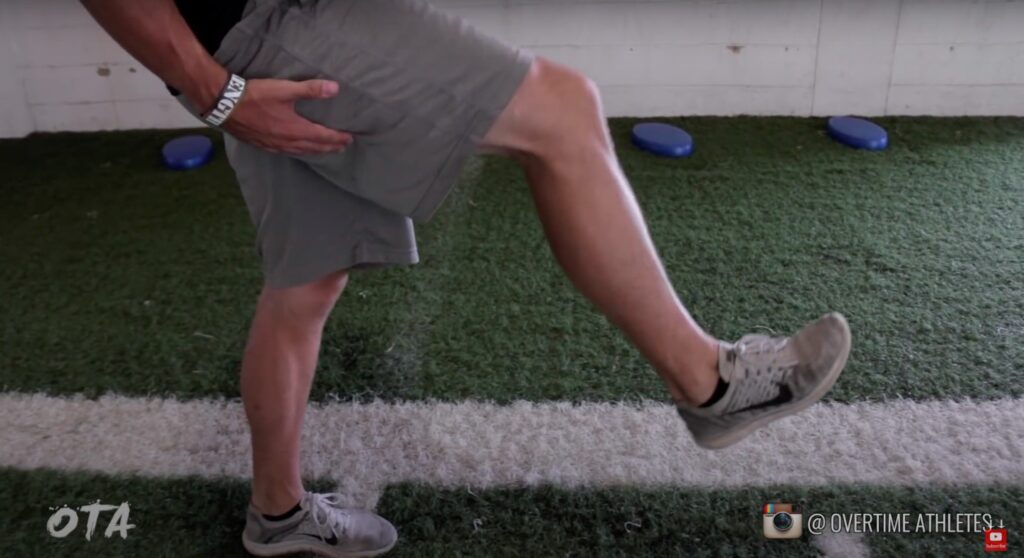
In an A-Skip you’d simply stab the ground with the toe directly out of this position, the B-Skip encourages you to open up through the posterior side of the leg.
Rather than kicking or reaching the foot out, you release the hamstring just enough so the feet remain under the hips.
As you perform this, you’re teaching the body to simultaneously flex at the hip and release the hamstring for proper cycling stride.
The more you can practice and train mechanics with the B-Skip, the more efficiently you begin to perform this so you can stay injury free while sprinting.
TOP END SPEED
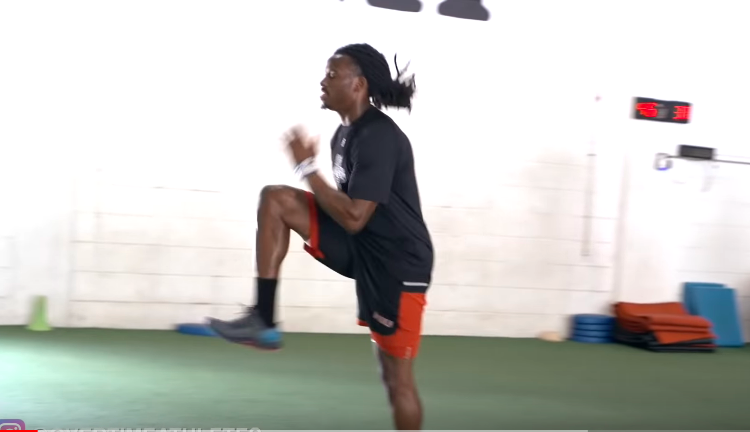
It takes more than just a few drills to perfect your top end speed mechanics and stay injury free while sprinting.
You need advanced programming to work on key skills like plyometrics, acceleration drills, and more.
Look no further than the Athletic Speed System.
Developing top speed and proper mechanics starts with the right foundation so it’s imperative that you invest in yourself with the most effective programming out there.
Beating your opponents starts with a quicker first step.
So if you’re ready to start cutting down your 40-yard dash times, beating guys to the end zone, and hitting more bases…
